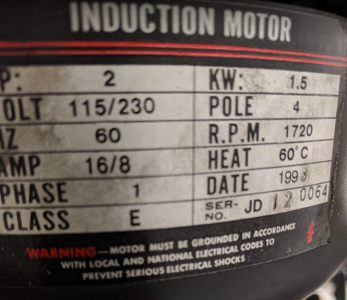During the milling the motor came to a stop (with the click/relay noise) and started buzzing (like electricity energizing a transformer) as if there's load on it but there was none. I flipped the switch to off and then back on (even tried reverse) and it just made the same buzzing noise. Pressed the reset button on the motor, same thing. Pressed it a few times again and flipped the switch to on and it started working again. Then same exact senario 20 mins later. So a couple of questions:
1. Is it the brushes? the run capacitor? or something else. I don't know much about motors...but sounds like I'm about to learn lol
2. If the motor is toast I would love to convert it to a VFD because changing two belts at the top is such a pain I mostly don't and run at incorrect RPMs. What style motor will bolt up to this guy?

1. Is it the brushes? the run capacitor? or something else. I don't know much about motors...but sounds like I'm about to learn lol
2. If the motor is toast I would love to convert it to a VFD because changing two belts at the top is such a pain I mostly don't and run at incorrect RPMs. What style motor will bolt up to this guy?



